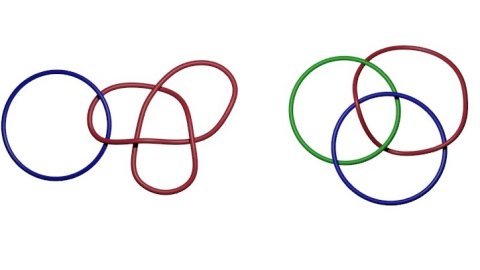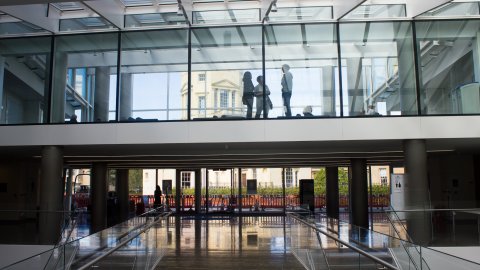A variational problem in L-infinity involving the Laplacian
Abstract
Suppose that we want to minimise the L-infinity norm of the Laplacian of a function (or a similar quantity) under Dirichlet boundary conditions. This is a convex, but not strictly convex variational problem. Nevertheless, it turns out that it has a unique solution, which is characterised by a system of PDEs. The behaviour is thus quite different from the better-known first order problems going back to Aronsson. This is joint work with N. Katzourakis (Reading).
Abstract regular polytopes and Y-shaped presentations for subgroups of the Monster sporadic simple group
Abstract
Abstract regular polytopes are finite quotients of Coxeter complexes
with string diagram, satisfying a natural intersection property, see
e.g. [MMS2002]. They arise in a number of geometric and group-theoretic
contexts. The first class of such objects, beyond the
well-understood examples coming from finite and affine Coxeter groups,
are locally toroidal cases, e.g. extensions of quotients of the affine
F_4 complex [3,3,4,3]. In 1996 P.McMullen & E.Schulte constructed a
number of examples of locally toroidal abstract regular polytopes of
type [3,3,4,3,3], and conjectured completeness of their list. We
construct counterexamples to the conjecture using a Y-shaped
presentation for a subgroup of the Monster, and discuss various
related questions.
The classical double copy: gravity from Yang-Mills
Abstract
Non-abelian gauge theories underly particle physics, including collision processes at particle accelerators. Recently, quantum scattering probabilities in gauge theories have been shown to be closely related to their counterparts in gravity theories, by the so-called double copy. This suggests a deep relationship between two very different areas of physics, and may lead to new insights into quantum gravity, as well as novel computational methods. This talk will review the double copy for amplitudes, before discussing how it may be extended to describe exact classical solutions such as black holes. Finally, I will discuss hints that the double copy may extend beyond perturbation theory.
Lagrangian solutions to the 2d Euler system with L1 vorticity and infinite energy
Abstract
We consider solutions to the two-dimensional incompressible Euler system with only integrable vorticity, thus with possibly locally infinite energy. With such regularity, we use the recently developed theory of Lagrangian flows associated to vector fields with gradient given by a singular integral in order to define Lagrangian solutions, for which the vorticity is transported by the flow. We prove strong stability of these solutions via strong convergence of the flow, under the only assumption of $L^1$ weak convergence of the initial vorticity. The existence of Lagrangian solutions to the Euler system follows for arbitrary $L^1$ vorticity. Relations with previously known notions of solutions are shown.
16:00
Non-Abelian Hodge Theory for curves
Abstract
The aim of this talk is to tell the story of Non-Abelian Hodge Theory for curves. The starting point is the space of representations of the fundamental group of a compact Riemann surface. This space can be endowed with the structure of a complex algebraic variety in three different ways, giving rise to three non-algebraically isomorphic moduli spaces called the Betti, de Rham and Dolbeault moduli spaces respectively.
After defining and outlining the construction of these three moduli spaces, I will describe the (non-algebraic) correspondences between them, collectively known as Non-Abelian Hodge Theory. Finally, we will see how the rich structure of the Dolbeault moduli space can be used to shed light on the topology of the space of representations.



